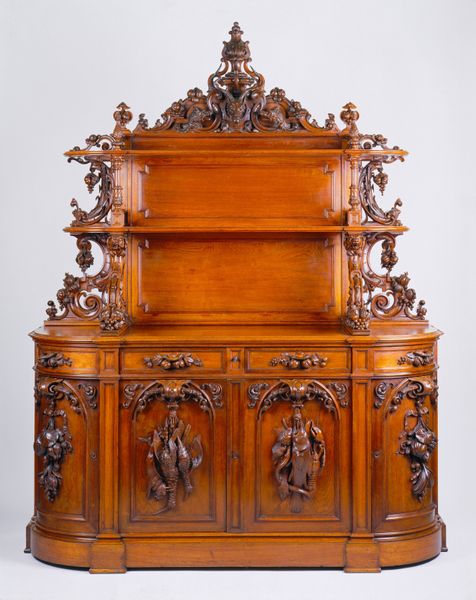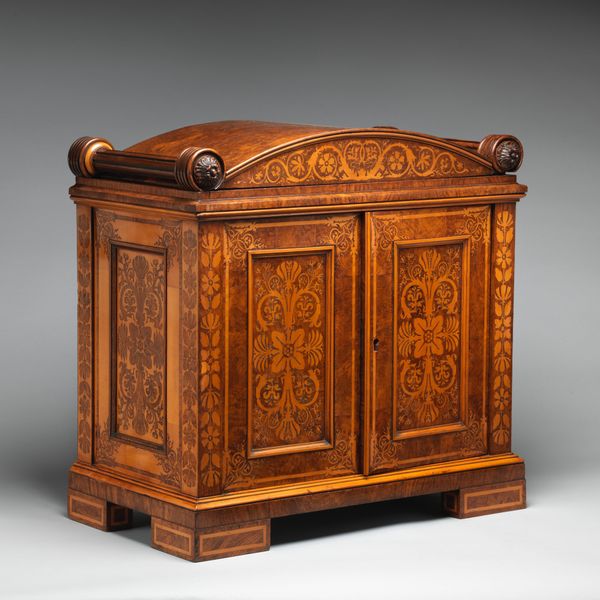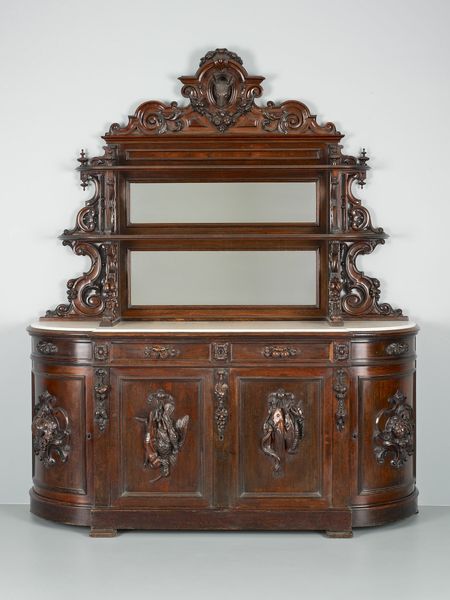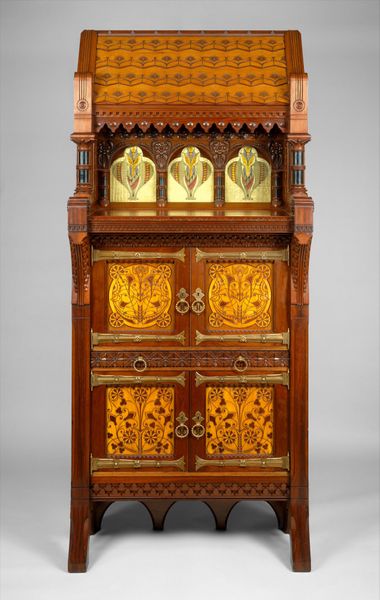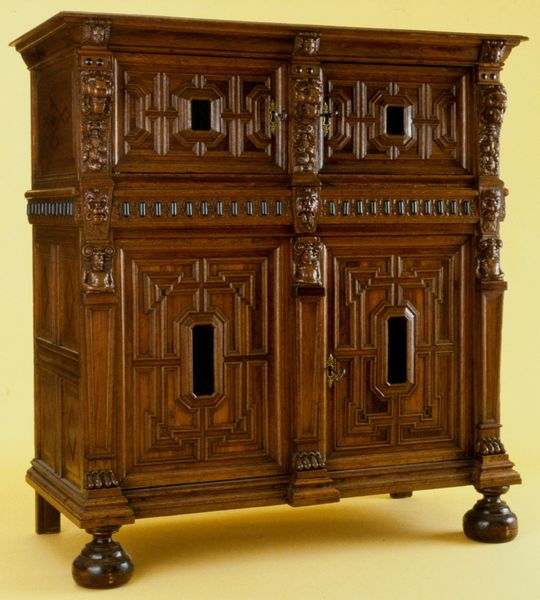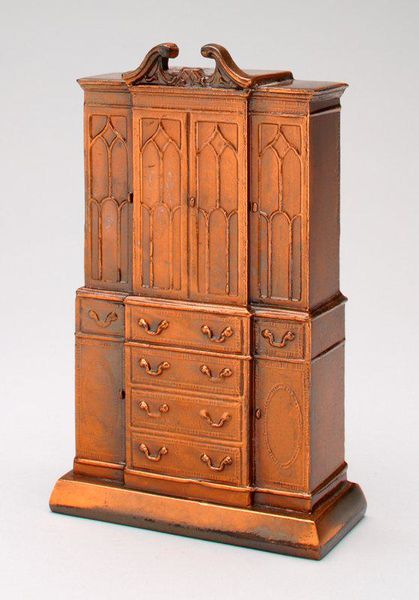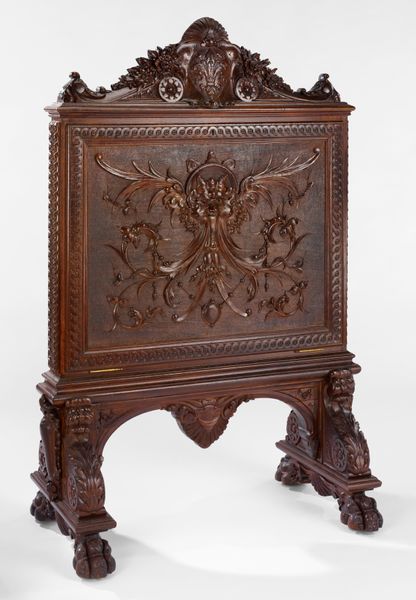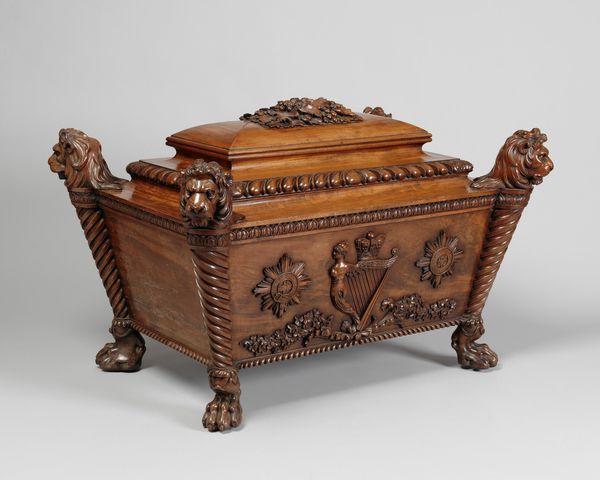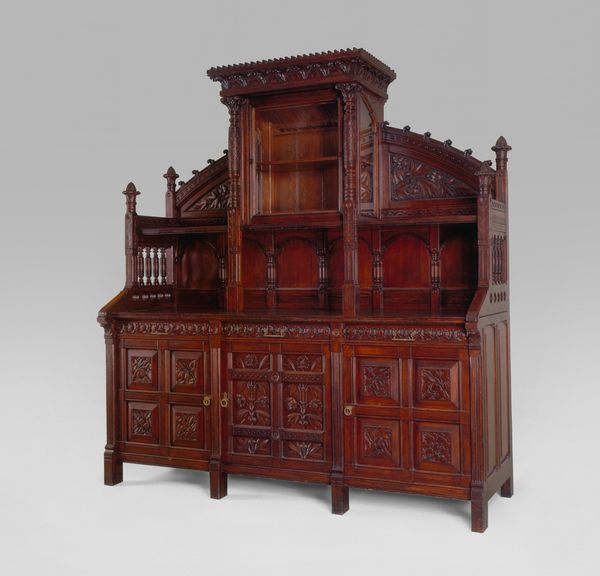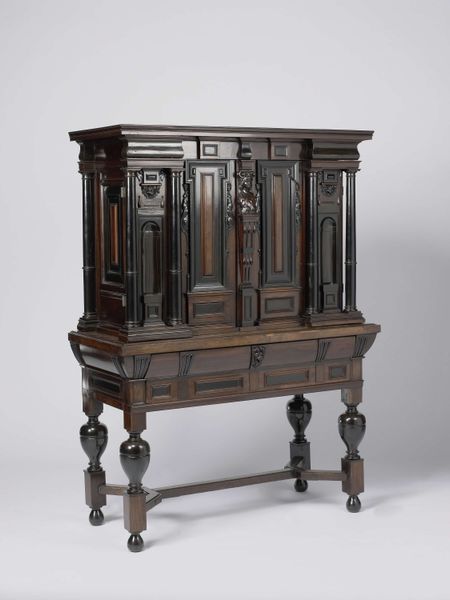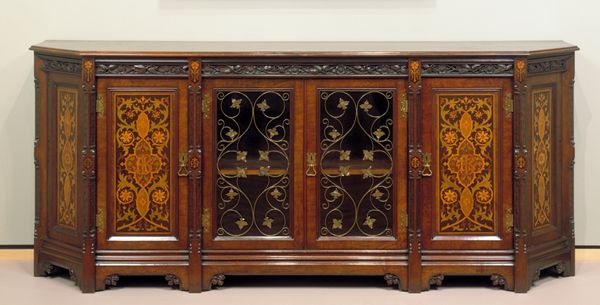
carving, relief, wood
#
wood texture
#
16_19th-century
#
carving
#
animal
#
relief
#
furniture
#
bird
#
flower
#
wood
#
decorative-art
Dimensions: 256.5 × 185.4 × 62.2 cm (101 × 73 × 24 1/2 in.)
Copyright: Public Domain
Editor: We’re looking at a "Sideboard" created between 1868 and 1880 by Daniel Pabst. It’s a stunning piece of carved wood, currently housed at the Art Institute of Chicago. It strikes me as incredibly ornate and imposing, with a real weight to its presence. What do you make of the formal elements at play here? Curator: The immediate presence you note stems largely from its hierarchical structure. Notice the tripartite division: a robust base, a decorative mid-section with those wonderful shelves, and a crested top. It's a clear visual language asserting order and status through verticality. The horizontal planes are then bisected by the doors of the base which present individual images for our decoding. What meaning do you think we can derive from this combination of rigid verticality and pictorial narratives? Editor: Well, the base feels almost like a predella to me, creating some symbolic visual hierarchy between utilitarian design, storytelling, and aesthetic pleasure above. Am I in the right direction here? Curator: Certainly, think about what the material itself—wood, with its own inherent grain and texture—contributes. Pabst exploits this natural quality, layering it with meticulously carved reliefs. There's a constant interplay between the organic and the geometric, the rough and the refined. It’s about more than mere surface decoration; the arrangement of all these compositional elements dictates your perception of the overall artistic content. It invites one to explore how the material and its ornamentation reinforce each other to convey purpose and presence. Do you find such interplay intriguing? Editor: I do, especially how the light catches those carved details. It emphasizes the three-dimensional aspect of a functional object, creating almost a sculptural experience. I guess I’m now seeing it as a conversation between function and artistry. Curator: Precisely! The success here hinges on Pabst’s orchestration of these formal elements. By meticulously controlling the textures, lines, and planes, he elevates the Sideboard from mere furniture to a compelling work of art. Editor: I see now how much of the piece’s impact comes from its visual composition alone, something that would be missed by merely focusing on the historical or biographical information around the sideboard's creation. Thanks!
Comments
No comments
Be the first to comment and join the conversation on the ultimate creative platform.
